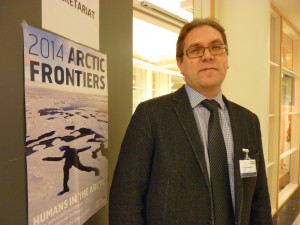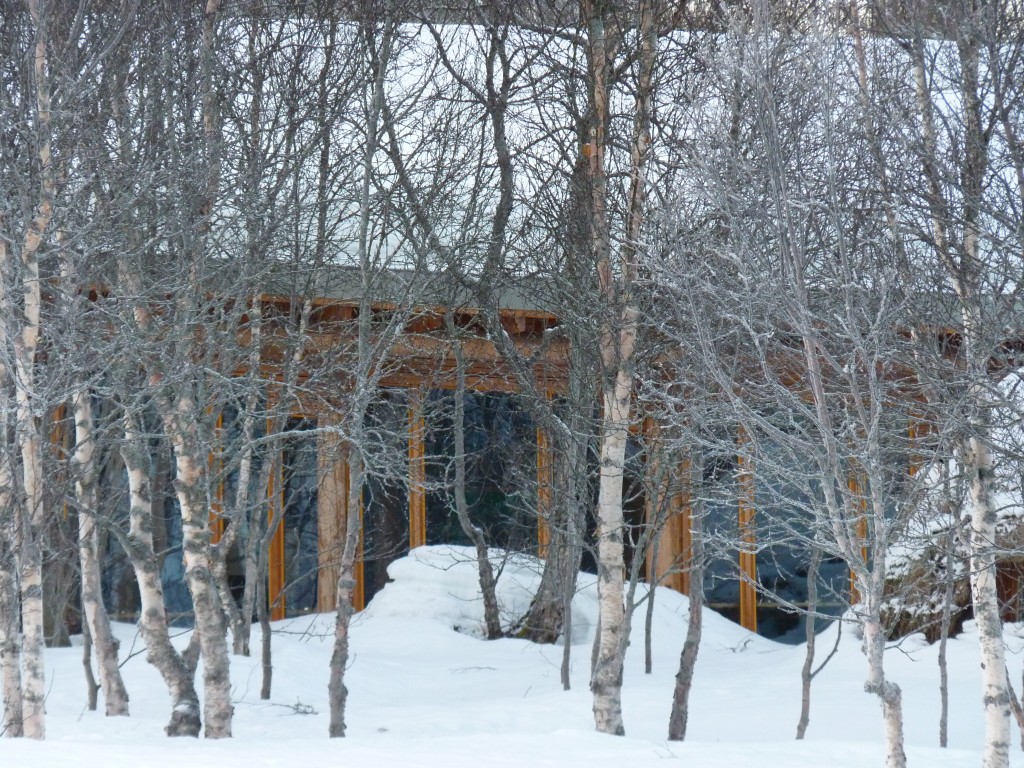Search Results for Tag: Health
Why high suicide rates in Arctic Russia?
Back at DW headquarters in Bonn after returning from Arctic Frontiers in Tromso at the weekend, I am sorting out notes and interviews with a wide range of experts on Arctic issues from all over the world.
One interview I would like to share with you here on the Ice Blog is a talk I had with Dr Yuri Sumarokov from the Northern State Medical University in Archangelsk in north-west Russia. It is the northernmost medical school in Russia and has a special focus on research into Arctic medicine and issues affecting the health of people in the Arctic.
People in the Arctic regions of Russia have a much higher suicide rate than in other parts of the country. The rate is higher again amongst indigenous people. Sumarakov, himself a medical doctor, shared some insights into the ongoing research with me. The topic is not new and certainly not limited to Russia. It seems though to be a topic that is not talked about enough, especially amongst politicians – and in the media. So let’s make a start. Please have a listen. There is plenty of food for thought and I for one feel motivated to find out a little more:

Yuri Sumarokov, MD, is Head of the Dept. of International Cooperation at Northern State Medical University (NSMU), Russia.
Germs under the permafrost: too scary?

-Monitoring the permafrost and emissions from it at Zackenberg Station, Greenland, I took the photo in 2009-
„I hope I wasn’t too scary“, said Professor Andrej Grjbovski to me after our panel discussion in Bonn the other night. He works with the Norwegian School of Public Health in Oslo and the Northern State Medical University in his native Arkhangelsk in Russia.
Well I’m not for panic-mongering, but given some of the information our experts were coming out with, maybe you can’t be too scary.
Prof. G. was in Bonn both for the conference at the environment ministry and the public panel discussion. (See links on the Ice Blog 30.11.2010). Amongst other things, he’s involved in a WHO project to monitor the effects of climate change on health in a region of northern Russia.
He was referring in particular to the health dangers from melting permafrost. There are all sorts of dangerous things buried in the permafrost, which come to the surface as it melts. Not for nothing do some people refer to a “timebomb” in the Arctic. After outbreaks of diseases like anthrax, for instance, animals were buried in mass graves. The anthrax spores can survive in there and pose a new threat to health as they emerge again. Yes, Professor, that is definitely in the “scary” category.
But a changing climate poses all sorts of less “spectacular” but nonetheless crucial challenges to health care around the globe. The WHO says the 2003 heatwave killed 70,000 people in Europe. Heatstroke and heart attacks can be fatal to the particularly vulnerable, especially older people. Children and the homeless were also mentioned as amongst the vulnerable population groups.
Floods are another example. Apart from deaths from drowning, there’s the water pollution and fungus left over in the aftermath, which can result in the spread of infectious diseases, respiratory and digestive problems etc.
And of course species are moving to different areas – including, for instance, the mosquito types that are bringing illnesses like Dengue to Europe.
Needless to say – but I’m doing it anyway, sometimes we have to keep reminding ourselves of the obvious – it’s the people in poorer countries or areas who suffer most from the higher health risks through climate change. Germany has an adaptation strategy involving early warning systems for extreme weather events or the spread of infections and flood protection systems. The deputy director of the German meteorology office the DWD Paul Becker told me in an interview capacity building and passing on the necessary expertise to adapt to the health risks posed by a changing climate were the key issues in helping the developing world, whereby finding the necessary funding was probably the main challenge.
Incidentally, on the sidelines of the Cancun talks, Germanwatch published its latest Climate Risk Index. It says more than 650,000 people died in around 14,000 extreme weather events over the last two decades.
Climate change – bad for your health?

As the negotiations kick off in Cancun (and the opening speeches seem to repeat the message of low expectations and going for partial compromises discussed in the last blog), I’m looking at this flyer, lying on my desk . The possible impact of climate change and extreme weather events caused by climate change on health is an “in” topic in Bonn this week. The German Environment Ministry, Federal Environment agency, German Meterological Office DWD and the European Office of the WHO are holding a joint two-day symposium. I went to the opening press conference at the Ministry yesterday. There’s more information on the background and the issue of health implications here:
Extreme weather events require precautions and adaptation
Tonight I am chairing a panel discussion here at Deutsche Welle on the same topic, that\’s why the flyer is on my desk. The floods in Pakistan this year and the fires in Russia are amongst the examples being discussed of the type of extreme weather events and disasters likely to be on the increase with a changing climate. Obviously, they have an impact on human health. The spread of diseases to areas where they haven’t been prevalent before, like Dengue fever in Europe, will also be on the agenda.
The discussion is the eighth in a series called the Bonn Dialogues. The city of Bonn is active in the network of cities working to combat climate change. It’s also of course the home of the UNFCCC, now busy in Cancun. And it houses the United Nations University UNU-EHS, the IHDP, International human dimensions programme on global environment change, and the DKKV, that’s the German catastrophe prevention organisation, who are organising the conference. I’ll be interested to hear what our panelists have to say. I’ll keep you posted.
Climate Change Begins at Home
I recently had an interesting visitor. Moira Rankin, from the US Soundprint Media enterprise, one of my partners in the ongoing Arctic feature series, dropped in to Bonn on a trip to Europe. She is heading for Siberia, to visit a core drilling project, which I hope to be able to give you more news on in May.
Moira was telling me about a forum they’d held to get peoples’ reactions to some of our programmes on climate change. One of the main things that came out was that people really want to know “what does it mean for me”? Climate change really comes home to people when they know it is going to affect them personally.
Well here in Bonn, on the Rhine, in the German state of North-Rhine Westfalia, we’ve been presented with the results of a study looking exactly at that today.
The Potsdam Institute for Climate Impact Research, one of the world’s most renowned bodies of its kind, conducted a study commissioned by the states’ Ministry for Environment, Conservation, Agriculture and Consumer Protection. And the results indicate the need for future-oriented policy, now.
We are going to get more heavy rain in winter, with higher risk of flooding. In summer, it’s likely to be the very opposite, with hot, dry summers and less water in the rivers. This, in turn, will affect energy, because we need water for cooling. In some regions, we may also see less ground water forming, because of higher evaporation in hot weather. There are a lot of implications for health, agriculture and biodiversity. We can also expect more frequent and more powerful storms.
Of course this in not as dramatic in some areas of the world, where people’s very existence will be under threat and they will have to migrate to survice.
But as Moira found in her listener research – people are more likely to pay attention and see a need for action if they know they’re going to be affected personally.

















Feedback